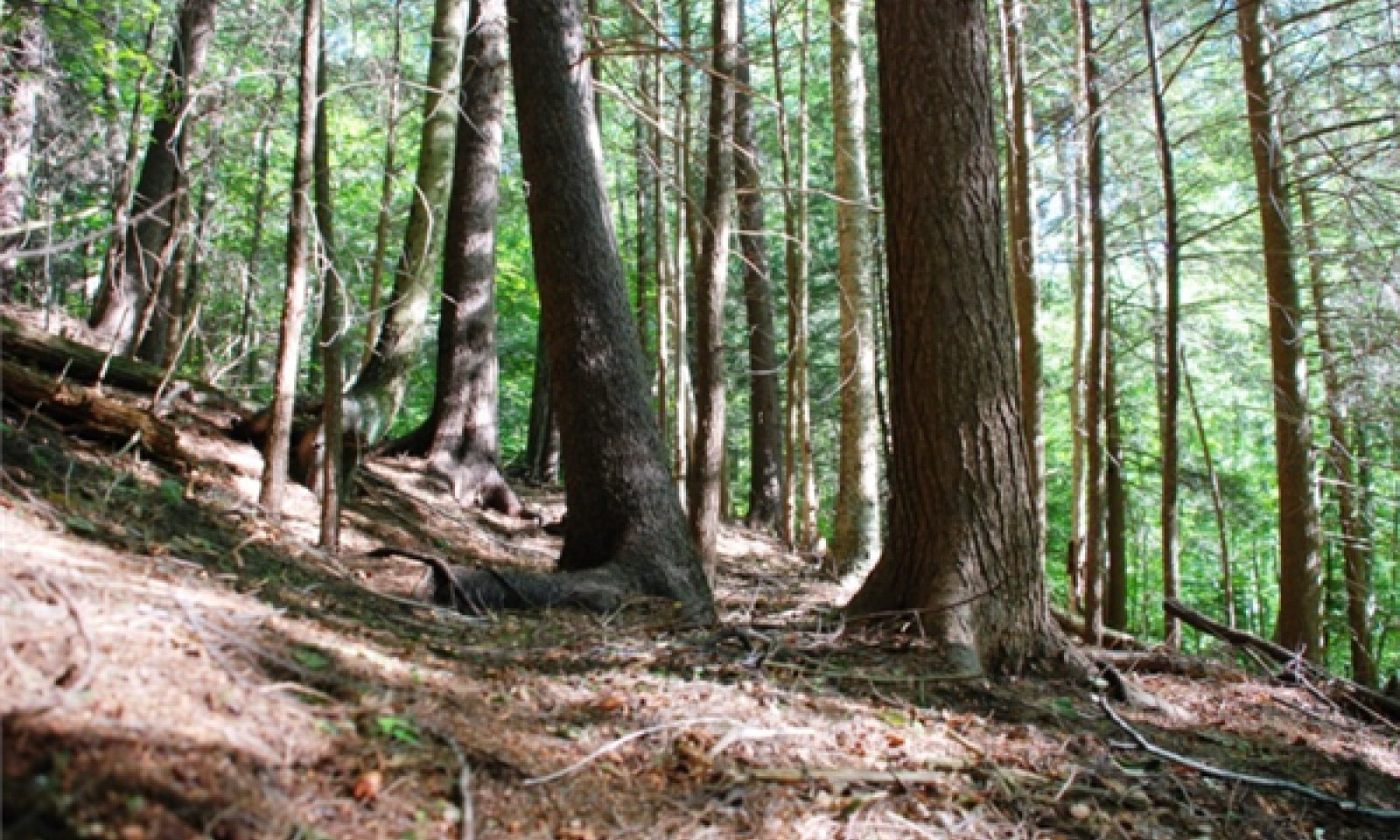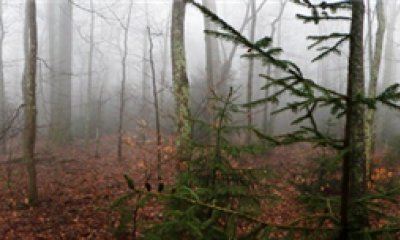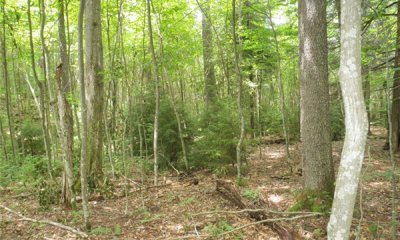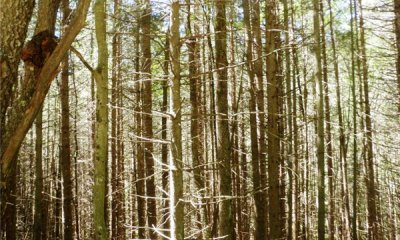
Spodic Shale Upland Conifer Forest
Scenario model
Current ecosystem state
Select a state
Management practices/drivers
Select a transition or restoration pathway
- Transition T1A More details
- Transition T1B More details
- Transition T1C More details
- Restoration pathway R2A More details
- Restoration pathway R3A More details
- Restoration pathway R4A More details
-
No transition or restoration pathway between the selected states has been described
Target ecosystem state
Select a state
State 1
Reference State



Description
This state represents the natural range of variability that dominates the dynamics of this site. The canopy typically has strong dominance by Picea rubens (red spruce), with Tsuga canadensis (eastern hemlock) next in importance. Shrub cover is sparse or absent; herbs are sparse or absent. The plant community is maintained by an absence of fire and major disturbance. Pre-European settlement disturbance consisted of single tree disturbance associated with wind, snow and or/ice damage.
Submodel
Description
This state occurs after logging, with an absence of fire or with the occurencce of very light fire. Remaining beech trees contribute seed rain to the site and/or beech seeds remain in the soil seedbank.
Beech bark disease (BBD), an non-native invasive disease from Europe, has altered the plant community. This disease, a complex affecting American beech, includes both insect and fungal components. The disease passes through three phases: the initial scale front phase, the second killing front phase, and the final aftermath forest phase. During the initial phase, the exotic scale insect disperses through the forest, causing scale-induced alterations to patches of bark. The killing front phase begins 1 to 19 years after the arrival of the scale. Throughout this phase, the scale-modified bark is killed and colonized by species of Neonectria, rendering the dead tissues vulnerable to additional decaying fungi. The resulting beech snap and mortality levels may reach 50 percent in 5 years. The final aftermath forest phase results in an ecological accommodation to the disease, resulting in either a change in species composition or the death of re-emergent beech. The genetically identical stump sprouts and root suckers (beech brush), which appear following the initial BBD deaths die in a second wave of BBD.
A majority of these sites have red spruce regeneration. A minority of these sites have an absence of red spruce regeneration.
Submodel
Description
This state occurs after logging and with an absence of fire or occurrence of very light fire. Residual cherry trees remain to contribute seed rain and/or seed remains in soil seedbank. The majority of this phase contains spruce regeneration; a minority does not.
Submodel
Description
Restoration requires variable density thinning (cutting, ringing or herbicide application) to create structural diversity and release spruce. Planting red spruce when seedlings are absent will establish red spruce at the site
Submodel
Mechanism
This transition occurs via logging with the absence of fire or the occurrence of light fire, leaving the spruce and beech seed sources intact.
Mechanism
This transition occurs via logging with the absence of fire or the occurrence of light fire, leaving the spruce and cherry seed sources intact.
Mechanism
This transition occurs via logging, intense fire, and commercial tree planting. Some sites reflect planting of abandoned marginal farmland.
Mechanism
Restoration requires the thinnning hardwoods (cutting, ringing, or herbicide application) to release red spruce. Planting red spruce if red spruce absent will establish spruce in the understory.
Relevant conservation practices
| Practice | External resources |
|---|---|
|
Tree/Shrub Site Preparation |
|
|
Tree/Shrub Establishment |
|
|
Forest Stand Improvement |
Mechanism
Restoration of the site requires thinning of hardwoods (cutting, ringing, or herbicide application) to release red spruce.
Relevant conservation practices
| Practice | External resources |
|---|---|
|
Forest Stand Improvement |
Model keys
Briefcase
Add ecological sites and Major Land Resource Areas to your briefcase by clicking on the briefcase (![]() ) icon wherever it occurs. Drag and drop items to reorder. Cookies are used to store briefcase items between browsing sessions. Because of this, the number of items that can be added to your briefcase is limited, and briefcase items added on one device and browser cannot be accessed from another device or browser. Users who do not wish to place cookies on their devices should not use the briefcase tool. Briefcase cookies serve no other purpose than described here and are deleted whenever browsing history is cleared.
) icon wherever it occurs. Drag and drop items to reorder. Cookies are used to store briefcase items between browsing sessions. Because of this, the number of items that can be added to your briefcase is limited, and briefcase items added on one device and browser cannot be accessed from another device or browser. Users who do not wish to place cookies on their devices should not use the briefcase tool. Briefcase cookies serve no other purpose than described here and are deleted whenever browsing history is cleared.
Ecological sites
Major Land Resource Areas
The Ecosystem Dynamics Interpretive Tool is an information system framework developed by the USDA-ARS Jornada Experimental Range, USDA Natural Resources Conservation Service, and New Mexico State University.






